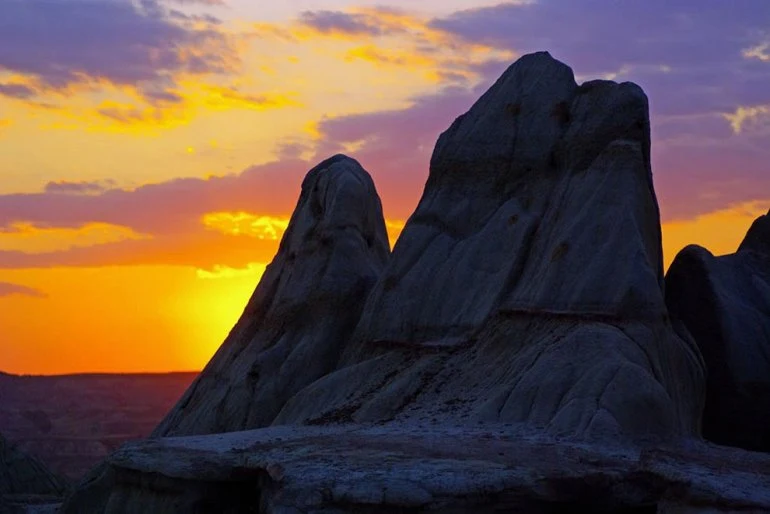Theodore Roosevelt National Park is an American national park made up of three geographically separated badlands in western North Dakota. In honor of US President Theodore Roosevelt, this is the only American national park named after one person.
The Theodore Roosevelt National Park occupies 70,446 acres (110.072 square miles; 28,508 hectares; 285.08 km. 2) ground in three sections: Northern block South block and block ranch Elkhorn. The larger southern portion of the park lies off Interstate 94 near Medora, North Dakota. The smaller North Block is located about 80 miles (130 km) north of the South Block, while Roosevelt's Elkhorn Ranch is located between the North and South Blocks. The Little Missouri River flows through all three parts of the park. Maah Daah Hey Trail connects all three units.
 |
| Theodore Roosevelt National Park |
Both main parts of the park have scenic roads, about 100 miles of hiking and horseback trails, wildlife watching, and hiking and camping opportunities. In 2018, the park was visited by 749 389 recreational visitors.
History
Roosevelt first came to the badlands of North Dakota, to hunt buffalo in September 1883. During this first short trip, he caught his bison and fell in love with the harsh lifestyle and "perfect freedom" of the West. He invested $ 14,000 in the Maltese Cross Ranch, already run by Sylvain Ferris and Bill Merrifield, seven miles south of Medora. Ferris and Merrifield built the Maltese Cross Cottage that winter. After the death of his wife and mother on February 14, 1884, Roosevelt returned to his ranch in North Dakota in search of solitude and time to heal.
 |
| Theodore Roosevelt National Park |
That summer he opened his second ranch, Elkhorn Ranch., 35 miles north of Medora, where he hired two Maine lumberjacks, Bill Sewall and Wilmot Doe. Roosevelt took a great interest in his ranches and hunting in the West, detailing his experiences in articles published in Oriental newspapers and magazines. He wrote three major works about his life in the West: Ranch Life and Hunting Trail, Hunting Trips and Wildlife Hunter. His adventures in the "busy life" in the open air and the loss of livestock in the hungry winter of 1886-1887. Influenced his implementation of the policy of preservation as President of the United States (1901-1909).
 |
| Theodore Roosevelt National Park |
Park Development
After Roosevelt's death in 1919, the Little Missouri Badlands were explored to identify possible park sites. Civic Conservation Corps camps were established in both future park divisions from 1934 to 1941 and built roads and other structures that are in use today. In 1935, the area was designated as the Roosevelt Demonstration Recreation Area. In 1946, it was transferred to the United States Fisheries and Wildlife Service as the Theodore Roosevelt National Wildlife Refuge.
 |
| Theodore Roosevelt National Park |
After a five-year campaign of representative North Dakota by William Lemke, President Truman created Theodore South Unit of Roosevelt National Memorial Park on April 25, 1947, the only National Memorial Park ever created; The northern section was added by Act of Congress in June 1948. In 1978, in addition to adjusting boundaries and creating 29,920 acres (121.1 km 2 ) of Theodore Roosevelt Desert, the park's name was changed to Theodore Roosevelt National Park.
Climate
Theodore Roosevelt National Park has two classifications; Wheatgrass / Needlegrass ( 66 type) with vegetation North Mixed meadow grass ( 18 shape vegetation) and northern Poyma ( 98 ) of the type with floodland forest vegetation ( 24 ) form vegetation.
 |
| Theodore Roosevelt National Park |
The park is home to a wide variety of Great Plains wildlife, including bison, coyotes, cougars, mustangs, badgers, elk, bighorn sheep, white-tailed deer, mule deer, pronghorns, prairie dogs and no fewer than 186 bird species. including golden eagles, pointed-tailed partridges and wild turkeys. Bison, elk and bighorn sheep have been successfully returned to the park.
